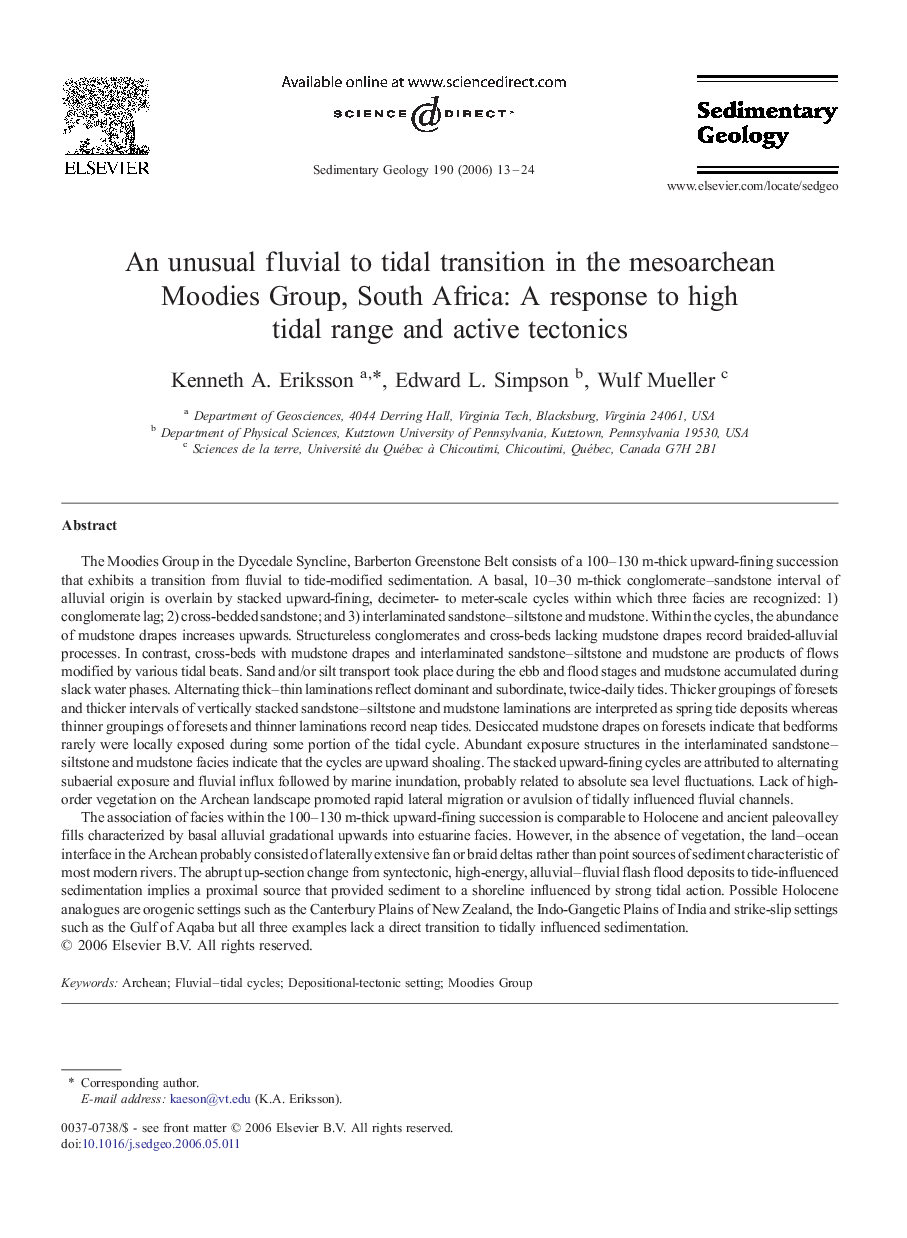| کد مقاله | کد نشریه | سال انتشار | مقاله انگلیسی | نسخه تمام متن |
|---|---|---|---|---|
| 4690965 | 1636183 | 2006 | 12 صفحه PDF | دانلود رایگان |

The Moodies Group in the Dycedale Syncline, Barberton Greenstone Belt consists of a 100–130 m-thick upward-fining succession that exhibits a transition from fluvial to tide-modified sedimentation. A basal, 10–30 m-thick conglomerate–sandstone interval of alluvial origin is overlain by stacked upward-fining, decimeter- to meter-scale cycles within which three facies are recognized: 1) conglomerate lag; 2) cross-bedded sandstone; and 3) interlaminated sandstone–siltstone and mudstone. Within the cycles, the abundance of mudstone drapes increases upwards. Structureless conglomerates and cross-beds lacking mudstone drapes record braided-alluvial processes. In contrast, cross-beds with mudstone drapes and interlaminated sandstone–siltstone and mudstone are products of flows modified by various tidal beats. Sand and/or silt transport took place during the ebb and flood stages and mudstone accumulated during slack water phases. Alternating thick–thin laminations reflect dominant and subordinate, twice-daily tides. Thicker groupings of foresets and thicker intervals of vertically stacked sandstone–siltstone and mudstone laminations are interpreted as spring tide deposits whereas thinner groupings of foresets and thinner laminations record neap tides. Desiccated mudstone drapes on foresets indicate that bedforms rarely were locally exposed during some portion of the tidal cycle. Abundant exposure structures in the interlaminated sandstone–siltstone and mudstone facies indicate that the cycles are upward shoaling. The stacked upward-fining cycles are attributed to alternating subaerial exposure and fluvial influx followed by marine inundation, probably related to absolute sea level fluctuations. Lack of high-order vegetation on the Archean landscape promoted rapid lateral migration or avulsion of tidally influenced fluvial channels.The association of facies within the 100–130 m-thick upward-fining succession is comparable to Holocene and ancient paleovalley fills characterized by basal alluvial gradational upwards into estuarine facies. However, in the absence of vegetation, the land–ocean interface in the Archean probably consisted of laterally extensive fan or braid deltas rather than point sources of sediment characteristic of most modern rivers. The abrupt up-section change from syntectonic, high-energy, alluvial–fluvial flash flood deposits to tide-influenced sedimentation implies a proximal source that provided sediment to a shoreline influenced by strong tidal action. Possible Holocene analogues are orogenic settings such as the Canterbury Plains of New Zealand, the Indo-Gangetic Plains of India and strike-slip settings such as the Gulf of Aqaba but all three examples lack a direct transition to tidally influenced sedimentation.
Journal: Sedimentary Geology - Volume 190, Issues 1–4, 1 August 2006, Pages 13–24